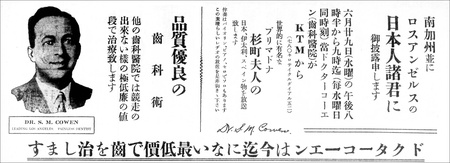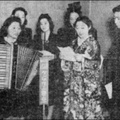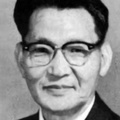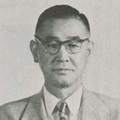Sponsored by Dr. Cohen, who runs a dental clinic in Los Angeles, the Japanese-language program was broadcast on KTM radio in Los Angeles for three seasons. Cohen is a dentist who is keen to attract clients from immigrant communities, and has sponsored many advertisements and programs on radio stations in Los Angeles and on the Mexican border. To Hispanics, he marketed his service as "Spanish-speaking," and in Japanese-language newspapers, he advertised "Japanese nurses are on duty," selling his services at low prices.
Japanese Music Program
Starting on Monday, February 8, 1932, the station began broadcasting 15 minutes of Japanese music every Monday, Wednesday, and Friday. The first day was in the evening, the second in the morning, and then from 1pm onwards. The programming was handled by Teikoku Boeki Shokai, run by Okada Keisui (Isaburo).
The program will feature special talent and timely topics, including the latest news on China, and is reported to be the best Japanese program ever broadcast. The program will be aired as a sign of appreciation for Japanese people living in California and as a testament to the high quality of Japanese arts.
The detailed program contents were first reported in the program on February 17th. According to the program, the program featured a harmonica solo by Sato Yoshimasa, as well as records of "Tokyo March," "Gunkan March," "I Want to Go Home" (Burton Crane), "Erotic March" (Awaya Noriko), and "Song of the Independent Garrison" (Toyama Army School Military Band). It seems that they quickly gave up on covering current topics as initially reported.
In addition, the program on February 19th featured piano performances of Aiko Tashiro's "Flow of Sound," songs by Agnes Miyagawa, and new releases released between January and February 1932, including "Flower Quart Scenery" (Shochiku Japanese and Western Ensemble), "Songs of the Manchuria Expedition" (Uchida Eiichi), and "Caravan" (Shikamaki Kiyoshi).
By the way, the following exchange was published in the Q&A section of the magazine Radio Doings (March 4, 1932):
Question: I heard a strange program last Friday morning at 9:45. I think it was in Japanese. I only heard the last bit of the program and someone handed it over to another station before I could figure out what it was. What was it?
Answer - Assuming you have a regular radio and not a shortwave one, you are listening to the Japanese Chamber of Commerce of Los Angeles program broadcast by KTM station. Try listening at the same time on Monday, Wednesday and Friday.
Although the sponsor's name was incorrect, it can be said that this program was well-known in American society. However, the timing of the Q&A was bad, and the broadcast time had already changed by the time the magazine was published, so even if you tuned in at that time, you would not be able to listen to the program. Also, the program itself ended by mid-March.
Miyoshi Sugimachi solo program (part 1)
Starting in June 1932, KTM station began broadcasting a new program every Wednesday at 8:30 pm, with solo performances by Miyoshi Sugimachi, sponsored by Dr. Cohen, for one month. Sugimachi was a vocalist who had been based in Seattle since the mid-1920s, and her talent was widely recognized not only in the Japanese community but also in the white community, leading to a wide range of activities including radio. In Seattle, she had been appearing on radio broadcasts since 1924 as an exclusive singer for KFOA station. An SP record was also released in Japan by Victor.
Sugimachi moved to Los Angeles in the summer of 1928, and performed vocally on KHJ and KFI stations. She then received a scholarship and left for Milan, Italy, to study in November. After returning from Italy, she appeared on KMTR and other stations in Los Angeles, showcasing the results of her studies. Negotiations for Sugimachi to appear on the program had already begun before the Japanese music program began.
Sugimachi Miyoshi says that since this broadcast is aimed at Japanese people, she will sing as many Japanese songs as possible, but she also plans to sing opera and classical songs in foreign languages.
The first broadcast was on June 29th. Sugimachi sang opera songs and Japanese songs "Sessessese" and "Hana no Uta" accompanied by the Oriental Trio. In addition, the Oriental Trio performed a trio. The Japanese announcer was Teruo Maeda, who has experience in Japanese announcements.
In the second broadcast, she sang a selection of foreign songs by artists such as Verdi and Gounod accompanied by the Oriental Trio, including Kosaku Yamada's "Kinyamonya" and the song "Hashire Daichi wo," which is a support song for international Olympic athletes. The latter was done so that Korean residents living in Japan could learn and sing the song ahead of the Los Angeles Olympics opening ceremony at the end of July.
The selection of two Japanese songs out of seven was followed in the third broadcast, and on this day, Shinpei Nakayama's "Musume of the Beniya" and Kosaku Yamada's "Karatachi no Hana" were sung. In addition to Sugimachi, the local Oliver Glee Club appeared and sang the two songs accompanied by Clara Susuki.
The fourth and final episode (July 20th) changed things up a bit and included nursery rhymes and Olympic songs for children.
Miyoshi Sugimachi solo program (part 2)
Sugimachi's singing program seems to have become popular because it allowed people to enjoy Japanese music in a comprehensive format, and after a one-month hiatus, the program resumed on August 24, 1932. As with the previous program, it was broadcast on KTM station at 8:30 pm on Wednesdays. Kito Fumiko, a graduate of Rafu Daiichi Gakuen, was appointed as the announcer.
According to the program preview, the songs will be accompanied by the Miniature Symphony, and will mainly feature songs by Yoshie Fujiwara, such as "Oki no Kamome," "Hoko wo Osoete," and "Departure," as well as Japanese songs such as "Furusato," "Yashi no Mi," and "Kaero Kaero." It is also notable that "Lullaby" is sung in each episode.
This time, the show was broadcast for four consecutive weeks, with the final broadcast on September 14. The songs sung on the final day were "Coconut Fruit," "Song of the Wandering Wind," "Lullaby," and "My Sunshine."
Continued >>
*This article is an excerpt from Japan Hour (2020).
© 2020 Testuya Hirahara








